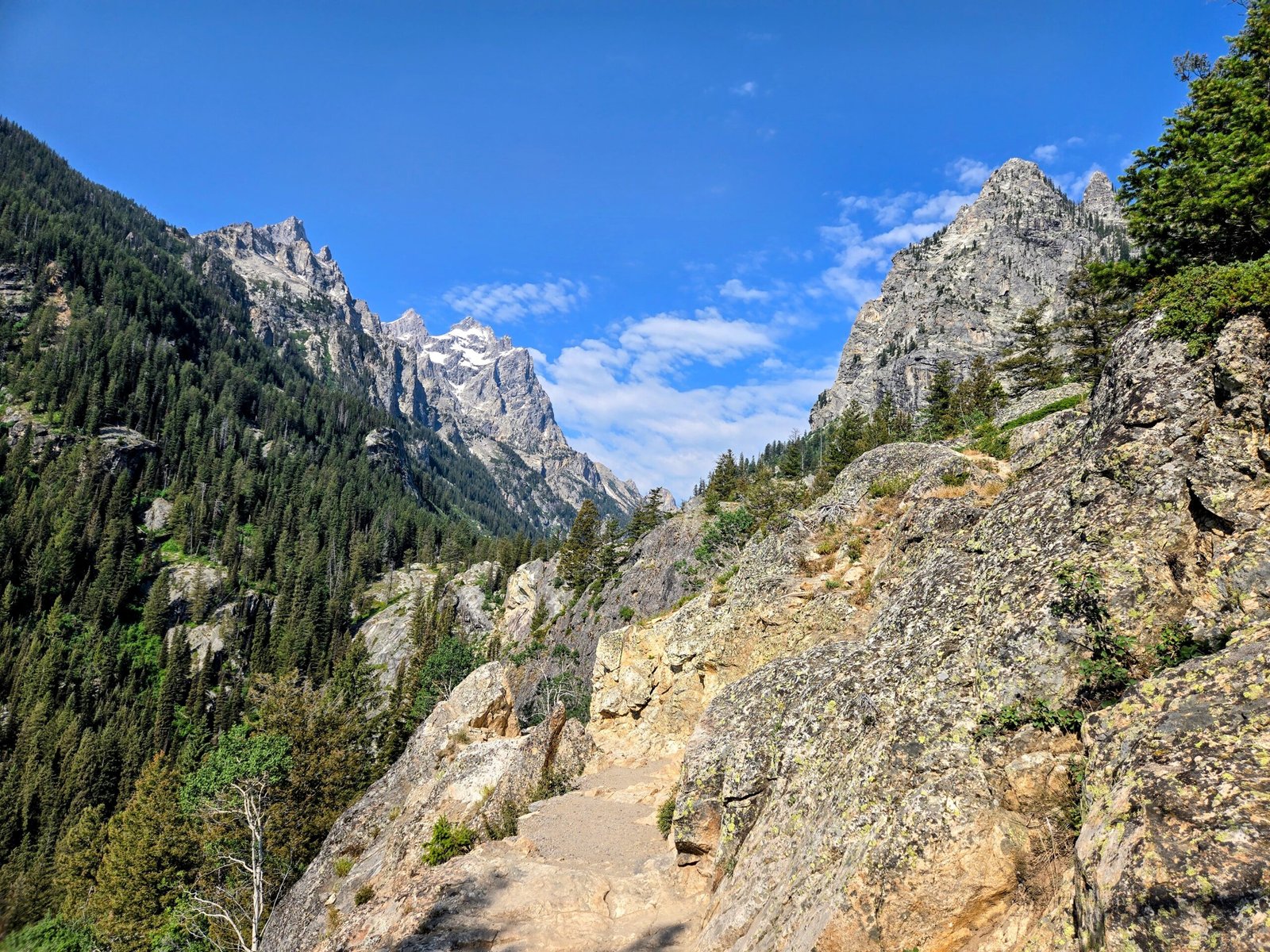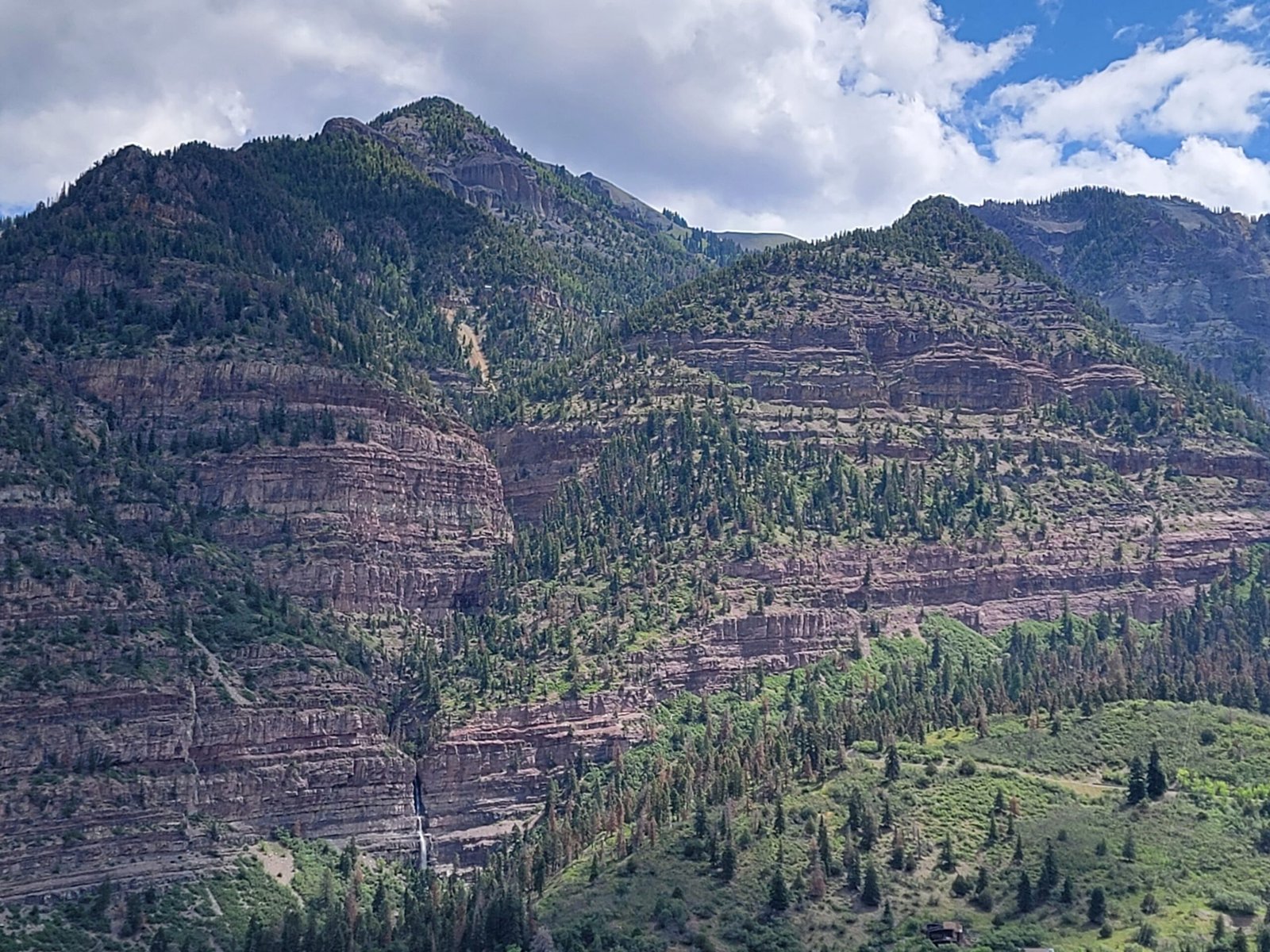
Yellowstone National Park is an outdoor lover’s paradise, brimming with stunning natural wonders around every bend.
If you’re short on time but want to experience the best of what this iconic park has to offer, then this two-day itinerary in Yellowstone is just what you need.
There is so much to do at this park that you could easily spend an entire week here, but I can help you see the highlights during two exciting days. I’ll cover the must-see sights while squeezing in some fantastic shorter hikes to help you immerse yourself in the park’s incredible landscapes.
All of my recommendations are kid-friendly!
Table of Contents
Getting to Yellowstone

Yellowstone National Park spans parts of Wyoming, Montana, and Idaho. The major airports closest to the park are:
- Bozeman Yellowstone International Airport (BZN) – 90 miles from West Entrance
- Jackson Hole Airport (JAC) – 57 miles from South Entrance
- Idaho Falls Regional Airport (IDA) – 110 miles from West Entrance
If driving to the park, the main entrances to Yellowstone are:
- West Entrance (near West Yellowstone, MT)
- North Entrance (near Gardiner, MT)
- Northeast Entrance (near Cooke City, MT)
- East Entrance (near Cody, WY)
- South Entrance (near Jackson, WY)
Yellowstone is comprised of two loop drives- the Upper Loop which is 142 miles around and the Lower Loop which is 96 miles around. That said, having a car in Yellowstone isn’t optional- if you fly in you will need to rent a car before entering the park. You will be doing a lot of driving between sites and there is no public transportation.
Book your next vacation through me!
Get better prices, perks, and customer service than you would booking through an online search engine. Plus, hotels favor guests who book through a travel advisor.
Submit a Travel Inquiry
Where to Stay in Yellowstone
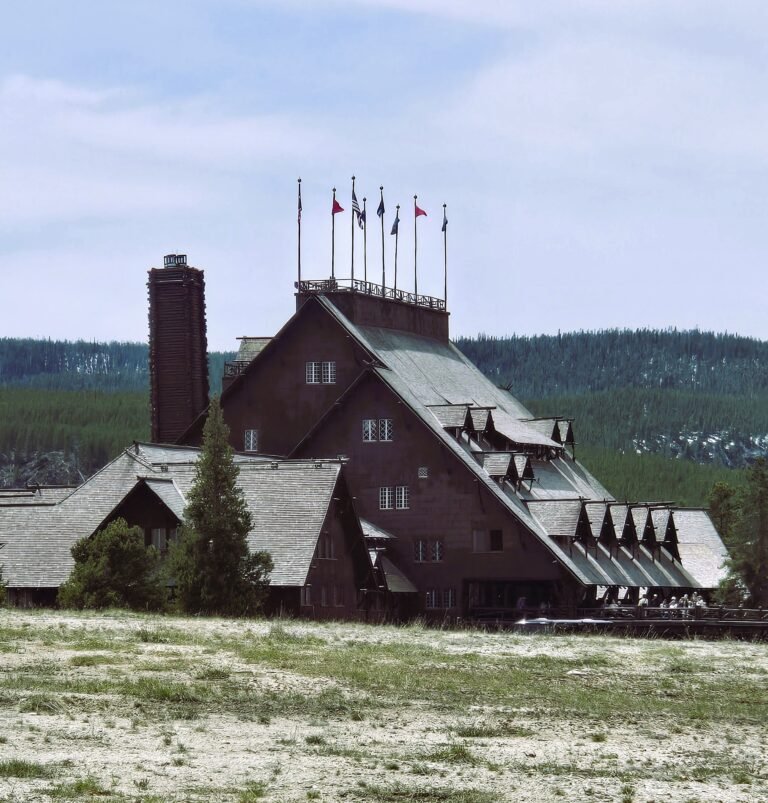
Staying inside the park allows you to start earlier and avoid traffic, but lodging books up far in advance. Towns outside the entrances offer more options but require driving into the park each day. Here are some great places to stay for your Yellowstone trip.
Inside the Park:
- Old Faithful Inn or Old Faithful Lodge (near Old Faithful Geyser)
- Canyon Lodge (near the Grand Canyon of Yellowstone)
- Mammoth Hot Springs Hotel (near Mammoth Hot Springs)
Outside the Park:
- West Yellowstone, MT (near West Entrance)
- Gardiner, MT (near North Entrance)
Camping in Yellowstone
Yellowstone offers a variety of camping options to suit different needs and preferences. The park has 12 campgrounds with over 2,000 campsites in total.
For a complete guide to camping with kids, check out this article Camping with Kids Checklist: Must-Have Outdoor Camping Gear for Kids.
For those looking for a traditional camping experience, there are several campgrounds run by the National Park Service (NPS) as well as privately run campgrounds operated by Yellowstone National Park Lodges. The NPS campgrounds like Indian Creek, Lewis Lake, Mammoth, Norris, and Pebble Creek tend to be more basic with vault toilets and no showers.
The Yellowstone Lodges campgrounds like Bridge Bay, Canyon, Fishing Bridge RV Park, Grant Village, and Madison offer more amenities like flush toilets, some with showers and laundry facilities.
All campsites in Yellowstone must be reserved in advance during the peak summer season, except for a limited number of first-come, first-served sites at Indian Creek and Lewis Lake campgrounds.
Reservations can be made up to 13 months in advance through recreation.gov for NPS campgrounds and the Yellowstone Lodges website for their campgrounds.
For those seeking a more remote and rustic experience, Yellowstone has 293 designated backcountry campsites accessible only by hiking or boating in.
Backcountry permits are required for all overnight stays and can be reserved in advance or obtained in person at backcountry offices up to two days before your trip.
No matter which type of camping you choose, be prepared for potential wildlife encounters, follow all park regulations, and practice Leave No Trace principles to help preserve Yellowstone’s pristine wilderness.
This itinerary will mostly focus on attractions along the Lower Loop drive, so I would consider that when choosing accommodations.
Day 1: Geysers, Hot Springs, & Waterfalls
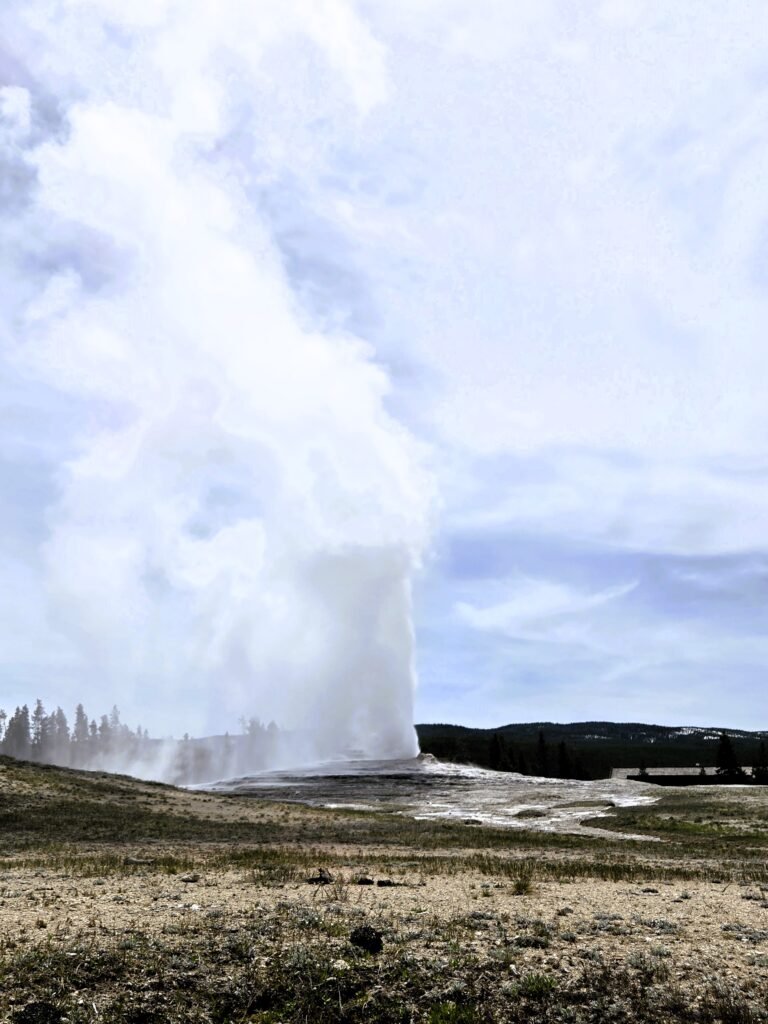
I recommend starting your day early, not only because there is so much to see in a short time, but also because you will be visiting Yellowstone’s most popular attractions today and parking lots fill up early.
Today’s itinerary begins closest to the West Yellowstone entrance, so if your accommodations have you elsewhere in the park feel free to do today’s itinerary in reverse if that is more logical for you.
Kick off your Yellowstone adventure by driving the scenic Firehole Canyon Drive, a 2-mile, one-way road south of Madison Junction. This short but spectacular route takes you past the Firehole River and culminates at the 40-foot Firehole Falls cascading amidst 800-foot lava canyon walls.
After admiring the waterfall, continue to Lower Geyser Basin and hike the 0.6-mile Fountain Paint Pot trail past gurgling mud pots, vibrant hot springs, and the impressive Fountain Geyser.
Next, head to Midway Geyser Basin, home to the iconic Grand Prismatic Spring. The boardwalk will also take you past Excelsior Geyser, my personal favorite due to its size and bright turquoise water! Additionally, you can take the short Fairy Falls trail (2.0 miles out-and-back, kid-friendly) for an overhead view of Grand Prismatic Spring. You don’t want to miss this elevated view of the enormous, kaleidoscopic hot spring – one of Yellowstone’s most photographed attractions.
By now, you’ve worked up an appetite, so make your way to the Old Faithful area for lunch. Grab a meal at the Old Faithful Lodge Cafeteria or enjoy a picnic while awaiting the predicted eruption of the legendary Old Faithful Geyser itself. The lodge will have signs for predicted eruption times of Old Faithful as well as other geysers in the area. There is also a wonderful gift shop inside so you can get all of your souvenirs.
There is a wonderful boardwalk in this area where you can walk while waiting for Old Faithful. You will see a variety of geysers, the Firehole River, and there is a longer hiking trail through the area if you have some extra time. When it gets close to eruption time find a spot along the boardwalk with a good vantage point of the geyser. There are also some benches if you need to get off your feet for a while. Few sights compare to watching thousands of gallons of boiling water erupt over 100 feet into the air!
In the late afternoon, drive to the West Thumb Geyser Basin on the shores of Yellowstone Lake. Take the boardwalk loop to see highlights like the Abyss Pool, Fishing Cone, and Lakeshore Geyser. This compact but vibrant area is the perfect way to end an action-packed day!

Day 2: Wildlife, Canyons, and More Waterfalls

Start your day at dawn by heading to Hayden Valley for some prime wildlife watching. This vast meadow is one of the best places in Yellowstone to spot bison, elk, grizzly bears, and wolves in their natural habitat during the early morning hours.
Take a scenic drive along the Grand Loop Road through Hayden Valley, stopping frequently to scan for animals with your binoculars (do not forget to pack binoculars!).
After wildlife watching, make your way to the Grand Canyon of the Yellowstone. Despite its name, this massive canyon was carved not by the Yellowstone River, but by erosion from the lava flows that occurred in the area long ago.
For stunning views, hike the North Rim Trail or the South Rim Trail, both of which run along the canyon rim offering different perspectives of the powerful Yellowstone River and its two major waterfalls – the Upper and Lower Falls. The North Rim Trail is 6 miles roundtrip while the South Rim Trail is a shorter 1.2 mile loop.
Stop for a picnic lunch at one of the viewpoints along the canyon rim trails to take in the breathtaking scenery. The Grand View is an ideal spot to eat while gazing out over the colorful canyon and thundering Lower Falls. Alternatively, grab lunch in Canyon Village at the Canyon Eatery or Canyon Fountain and Grill.
In the afternoon, consider hiking the short North Rim Trail to the brink of the 109-foot Upper Falls for an up-close look at this powerful waterfall. Or drive a bit further to the trailhead for an easy 1-mile roundtrip hike to the base of the 308-foot Lower Falls, one of the park’s most iconic and photogenic waterfalls.
The end of day 2 is open-ended and depends on where your lodging is. You can end your day by driving through the Norris Geyser Basin to see the park’s hottest thermal area, home to Steamboat Geyser, the world’s tallest active geyser. Or head to the Mammoth Hot Springs area to view the unique terraced hot springs before exiting the park.
By splitting your time between wildlife viewing, the dramatic Grand Canyon, powerful waterfalls, and Yellowstone’s hydrothermal wonders, this itinerary ensures you experience the park’s diverse highlights in just two action-packed days.
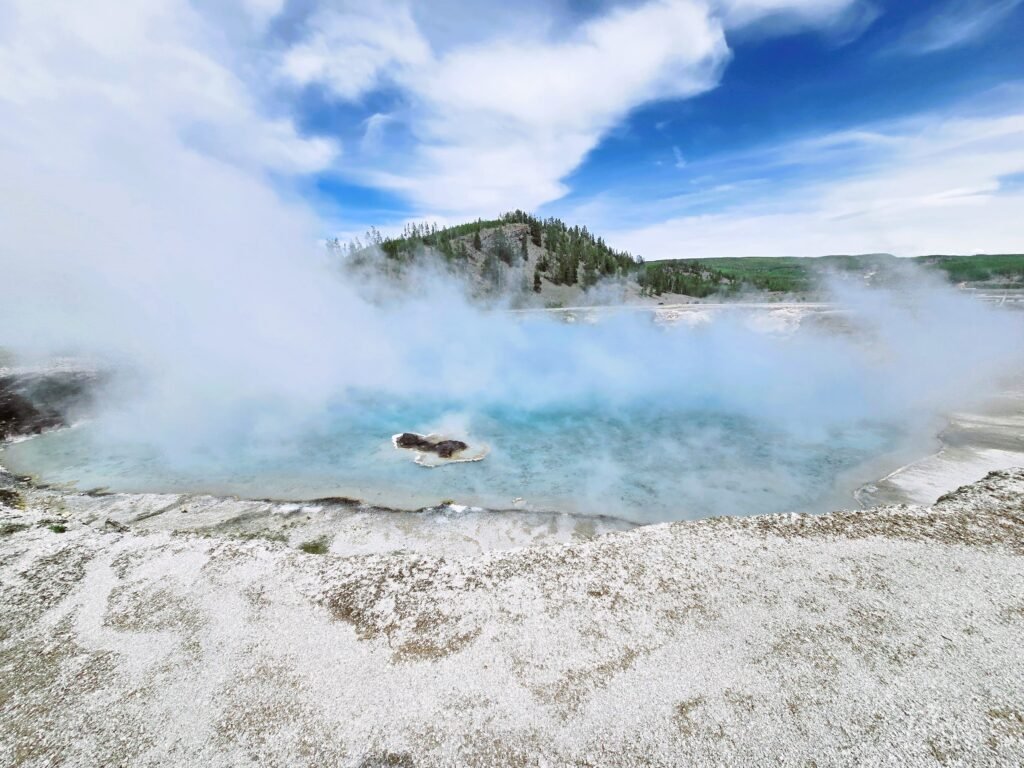
Yellowstone Travel Tips

When is The Best Time to Visit Yellowstone?
- Summer (June through August) is the most popular time, with warm temperatures ideal for hiking and viewing wildlife. However, it’s also the most crowded.
- Spring (April to May) and Fall (September to October) offer fewer crowds and discounted lodging rates. Be prepared for cooler temps and some facility/road closures in early spring.
- Winter (December to March) is magical with fewer visitors. Many roads are closed, but you can snowshoe, cross-country ski, snowmobile, and view wildlife like bison in the snowy landscapes.
Packing List for Yellowstone
- Proper hiking boots/shoes with good traction and ankle support
- Moisture-wicking socks and layers (t-shirts, fleece, waterproof jacket)
- Hat, sunglasses, sunscreen for sun protection
- Reusable water bottles to stay hydrated
- High-protein snacks like trail mix and energy bars
- Bear spray (purchase in gateway towns) and know how to use it
- Binoculars for wildlife viewing
- Daypack to carry essentials
- Trekking poles for stability on longer hikes
How Much Does It Cost to Enter Yellowstone?
You need to pay for entry to Yellowstone National Park. The cost is as follows:
- $35 per private vehicle, good for 7 consecutive days
- $70 for an annual pass, good for all year
- $80 for an America the Beautiful pass. This pass is good for unlimited entry to all US National Parks and other NPS sites for an entire year. I always recommend going this route if you enjoy traveling! It pays for itself quickly.
Safety Precautions and Park Regulations
- Stay on boardwalks and designated trails in thermal areas – the ground is unstable.
- Keep at least 100 yards (91 m) away from bears and wolves.
- Do not approach or feed any wildlife.
- Obey all trail closures and advisories.
- Be bear aware – make noise, carry bear spray, and know what to do in an encounter.
- Do not leave any food, coolers, or scented items unattended in your vehicle.
- Obtain proper permits for backcountry camping and fishing.
- Check for fire restrictions before starting campfires.
Planning a Trip to Yellowstone National Park?
As a travel advisor who is deeply familiar with this area, I will help you plan the perfect bucket list vacation.
I’ll get you the best deal on accommodations, secure you hotel perks like complimentary room upgrades and spa credit, and help you craft the perfect itinerary tailored to your wants and needs. Best of all, this comes at no cost to you!
For more information about booking travel with me, see my Services page.
For more National Park inspiration, check out these articles

